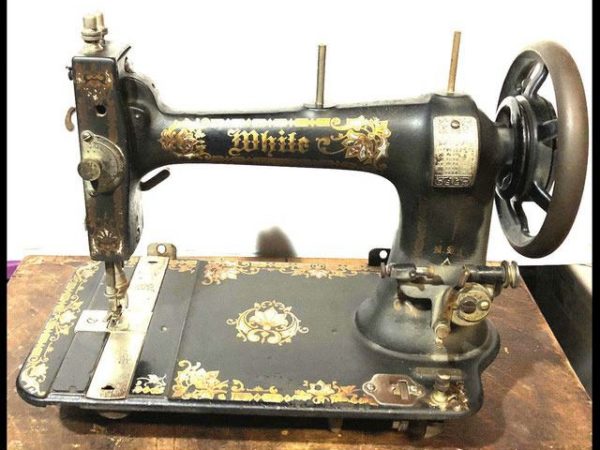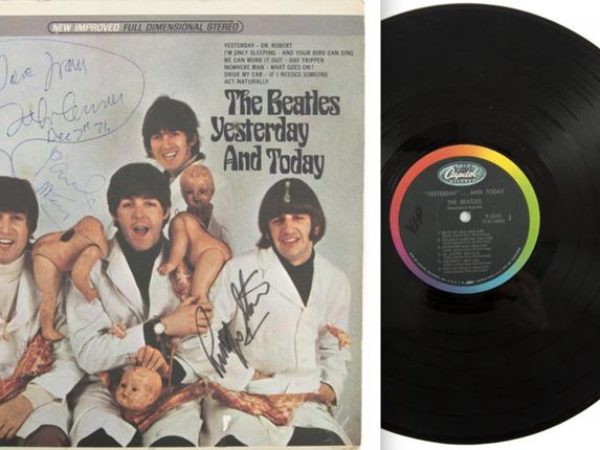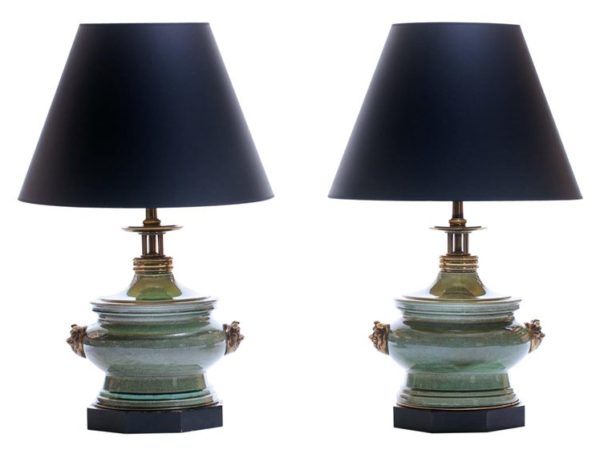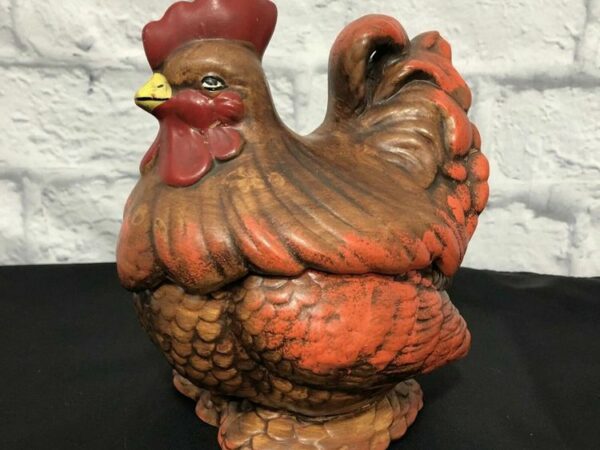We understand the stress of having antique items that are no longer needed but that you can’t throw away because you know they are valuable and can be sold. Are there local stores or online markets where you can sell these antique artifacts and be done with them?
Of course, there are, and this article will help you find the best ones, whether you’re looking to sell antiques online at a marketplace or in a physical store. Continue reading to find out more.
Table of Contents
What is an Antique?
An antique is an object that appears to be old based on its age. This is significant due to its beauty and unique qualities, distinguishing it from other objects. Antiques are commonly defined as objects that are at least 100 years old.
Antiques are collected for several reasons, including their historical significance, aesthetic value, practical value, emotional value, or rarity. They represent a previous age and allow people to stay connected to their heritage.
What is an Antique Shop?
An antique shop is a store that selects, stores, restores, and sells antiques from previous eras to preserve their historical value. Simply put, antique shops are retail establishments that specialize in the sale of historic artifacts.
An antique shop is a marketplace where buyers and sellers negotiate the price of antique artifacts such as art, furniture, glassware, and others.
Best Websites for Selling Antiques Online
Many online marketplaces have specialized in selling antiques for many years. These online marketplaces bridge the gap between buyers and sellers looking to sell antiques. We will examine different online marketplaces and highlight the best ones for selling antiques.
1. Etsy
Etsy, a popular website and one of the largest online markets for selling everything from amazing items to unique handcrafted pieces to vintage treasures, has been operating since 2005.
To begin selling on Etsy, you must first sign up for a free account. After you create an account, you must select your shop location and currency, make a listing, select a payment method that works for you, and then configure your billing method to indicate how you wish to pay your Etsy fees.
Although creating an Etsy account is free, there are three basic fees to help your online shop run smoothly.
Among the fees are a listing fee, which is the commission paid to Etsy, a transaction fee, which is the amount charged for using a payment card, and a payment processing fee.
Remember that you can only open an Etsy store if you live in an area where selling on Etsy is legal.
Antiques are completely acceptable to sell on Etsy. So, if you have some antiques to sell, listing them on one of the world’s largest markets is your best bet.
2. eBay
As one of the earliest pioneers of online marketplaces connecting buyers and sellers, eBay is a viable option for selling antiques. eBay is a global online auction and trade website that was founded in 1995 and has been selling anything old, including antiques, since then.
eBay charges two types of selling fees: an insertion fee when you create a listing for your store and a final value fee when an item is sold.
These costs are determined by five factors, including the items sold, the format and category chosen for your listing, any optional listing enhancements provided, and the seller’s conduct and performance.
The first 250 items per month are free on eBay, and each subsequent listing is subject to a $0.35 insertion fee. Auctions are the norm on eBay; only a few items have fixed prices.
3. Amazon
Amazon is a multinational American technology company specializing in e-commerce, digital health, and artificial intelligence.
To sell on Amazon, you are required to select either the $0.99 individual plan or the $39.99 professional plan. The site gets a specific amount for each sale, known as a referral fee.
You must also create an Amazon account, but first, you must determine if your country meets Amazon’s eligibility requirements.
Amazon is a great online marketplace for selling antiques, as it attracts more than 100 million sellers and buyers per month.
4. Ruby Lane
Ruby Lane is one of the largest online vintage retailers available. It allows the sale of antique works of art, clothing, jewelry, and glassware.
To sell on Ruby Lane, you must sign up by creating an account and ensure that your antiques and services are high quality. You must also meet certain requirements, such as having at least 10 items for sale in your store.
Ruby Lane does not charge for store creation, setup, or listing generation but charges a 9.9% service fee on all purchases. In addition, there is a monthly maintenance fee of $25, which is only refundable if you list at least 15 items within the month.
5. Chairish
For over eight years, Chairish has been a go-to destination for shoppers looking for one-of-a-kind, high-end vintage, and antique items or used furniture and art.
Expert curators vet items intended for sale on Chairish to ensure their authenticity. If the curators do not deem an item worthy of consideration, Chairish can reject it.
After creating an account on Chairish, you can build a listing with relevant keywords, attach a price, select a shipment method, or opt for Chairish’s hassle-free shipping approach.
You must also set up a payment account, publish important information on your profile to build relationships with buyers, improve your photos, regularly add new items to your listings, and consider reducing the price of an item that has not sold within 30 to 60 days.
Chairish allows you to earn a 70% or 80% gross profit by taking a 30% or 20% cut of each sale, respectively.
6. TIAS
The Internet Antique Shop, or TIAS, is an online antiques and collectibles retail platform. All you need is a computer, an internet connection, good email software, a digital camera or scanner, and a willingness to learn how to open a shop.
MakeAShop, an automated web store system provided by TIAS, allows you to upload as many products as you want to your store, along with text and images for identification.
They also offer the auction method, which allows you to list as much merchandise as you wish to sell without limit, as opposed to the fixed-price store in the MakeAShop method, which only allows you to have 25 items on your shop, all of which must have a total retail value of at least $1,200.
If you intend to sell using the MakeAShop method, TIAS will charge you a 10% commission, whereas the auction method will cost you 2%. On the TIAS MakeAShop website, only antiques, collectibles, and similar products may be sold.
7. Bonanza
On Bonanza, people can sell everything from antiques to electronics. It is similar to eBay in several ways, including the ability to sell a wide variety of products and having simple, user-friendly interfaces. Still, it also has its own unique features.
Unlike eBay, Bonanza charges a lower 3.5% commission and a $0.25 transaction fee on the final sales value.
It also has a fixed price system, in contrast to eBay’s auction sales method, where prices set by sellers remain unchanged without bidding. To create a store on Bonanza, go to the dashboard and select “start selling.”
8. 1stDibs
1stDibs is an online marketplace that sells luxury items such as high-end furniture for interior design, fine art, and antique jewelry. It connects buyers with sellers who have been thoroughly vetted by in-house experts.
To fund the site, 1stDibs charges a 15% commission on all sales and a 3% transaction fee for card transactions.
With more than 474 million sales since 2000, over 155,000 orders in 2021, an average order value of $2,800, and 4.3 million registered users, you can immediately start selling and become a 1stDibs dealer.
9. Go Antiques
Go Antiques is an online retail and auction marketplace for collectibles, antiques, coins, and other items that allow users to buy high-quality items from reputable sellers from around the globe.
Sales made through a dealer’s store are not subject to a commission charge by Go Antiques. There are also no listing fees. Membership fees are the only costs, which range from $24 per month for basic to $49 per month for professional to $74 per month for power.
As a dealer, you can keep your inventory, customize and update your storefront as you see fit, and you have free access to useful tools to help you manage your storefront.
10. Sotheby’s
With over 80 locations in 40 countries, Sotheby’s is one of the world’s largest, most reputable, and most dynamic art, luxury, and collectibles marketplace.
To sell an antique on Sotheby’s, you must include a description, front and back photographs and submit the listing for review. During the review process, specialists examine the submitted item and make estimates, which are subject to change once the item is inspected.
Additionally, Sotheby’s offers two primary types of sales methods. They include auctions, where your item is sold to the highest bidder, and private sales, where your item is extremely valuable, and the buyer wishes to negotiate the price.
Sotheby’s charges a 10% commission on all hammer price sales.
11. Craigslist
Craigslist is a customer-to-customer online marketplace where almost anything can be bought or sold. It is a classified website that aims to provide users with non-commercial means of connecting.
You can build a business and listings for free on Craigslist to sell your antiques. There are no subscription, transaction, commission, or listing fees. If you’re attempting to market antiques, you get everything for free.
You are only required to pay when you open a store to sell a property, rent an apartment, or post a job opening. Craigslist, which has been in operation for nearly 20 years, is an excellent venue for selling antiques.
12. Facebook Marketplace
Facebook Marketplace is a section of the social networking site Facebook dedicated to assisting local sellers.
It is a quick way to explore, buy, and sell products with people in your community, and since there are no restrictions on what can be sold, your antiques are welcome.
To create or add your antique products to Facebook Marketplace, you need only an internet connection, images of the antiques you wish to sell, and a Facebook account.
Unlike most other marketplaces, this one is free. There are no fees for setting up a store or listing. It is completely free and an excellent option for connecting with local antique bidders and selling your antiques.
5 Best Places to Sell Antiques Locally
Before the rise of online marketplaces, shops existed. Local stores and physical sites allowed the purchase and sale of valuable antiques by collectors. These stores are also noteworthy. So, we will go over a few of them below.
Rogers Flea Market & Auction
Rogers Flea Market & Auction, the largest supermarket in the tri-state area, has over 1,600 vendor stalls spread across 250 acres of property. Up to 50,000 people can gather at the award-winning market on a busy day.
Since 1955, auctions have been held there as an added service, bringing together buyers and sellers. The antique market is only open on Fridays, but you can reserve a spot between Tuesday and Friday morning.
Renting a space costs between $74 and $24 per month. Further details are available online. Rogers Flea Market is located in Ohio
Portobello Road Market
Portobello Road Market in London is one of the world’s largest antique markets. There are over a thousand vendors selling every type of antique and collectible at the market.
Prior to the 1940s, the Portobello Road Market was known for selling only food and other necessities. The number of people selling non-food items increased gradually over time.
Today, the Portobello Road Market is renowned for its antiques, with stalls offering everything from clothing to works of art lining the entire street.
Rose Bowl Flea Market
With over 2,500 members and 20,000 monthly visitors, the Rose Bowl Flea Market is one of the world’s most interesting and successful flea markets and has been in operation for over 50 years.
To sell at the Rose Bowl Flea Market, you must reserve a space and purchase tickets in advance. This will guarantee you a spot on the second Sunday of each month which is when the market is open. The market is located on Rose Bowl Drive in Pasadena, California.
Pawn Shops
A pawn shop is another place to sell your antiques. Pawn shops accept valuable items and pay cash for them. If you believe the antiques you possess are valuable, you should have them appraised at a pawn shop.
After examining your antique, the pawnbroker will determine how much they are willing to pay for it, communicate this amount to you, and you will decide whether to accept their offer or counter the offer.
In either case, the choice is entirely yours, and you must determine whether the price is reasonable for you.
Yard or Garage Sales
Having a garage sale is another way to get sell off your antiques. Garage sales are a casual way to attract neighborhood residents to your backyard so they can buy items you wish to sell.
Simply gather the antiques you want to sell, price them, set up your garage sale booth, and invite potential buyers.
Frequently Asked Questions
How Do I Determine the Value of An Antique Item Before Selling It?
Even if you intend to sell your antique online, it is recommended that you consult with a local appraiser first. These experts will assess the market value of your antique, provide a fair evaluation, and provide you with a written report detailing the antique’s estimated value.
What Antique Items Sell Best On the Market?
The most sought-after collectibles are antique records, art deco, vintage books, mid-century modern, jewelry, art nouveau, vintage kitchenware, and antique lamps.
Which Antiques are Valuable?
Antiques such as novelty hardware, which can be purchased for $1,500, depression glasses, which can be purchased for approximately $4,000, and barber chairs, which range in price from $500 to $5,000, are examples of valuable antiques.
Conclusion
Antiques are a way to reconnect with our history. Amazingly, there are stores dedicated to ensuring that antiques are forever honored by preserving their value and allowing sellers to create online shops on their websites or simply visit a local shop to sell an antique item for cash.
These shops help to preserve history by allowing sellers who would otherwise discard these unique antique pieces to sell them both online and locally. We hope you found this information useful and were able to find online and local places to sell your antiques. If you have any questions, please leave them in the comments section.






![Vintage Schwinn Bikes: [Types, Identification, and Values]](https://www.txantiquemall.com/wp-content/uploads/2022/05/5.-Schwinn-1967-Ramshorn-Fastback-Stingray-Sky-Blue-vtg-600x450.jpg)
